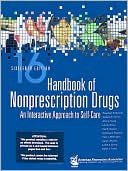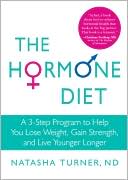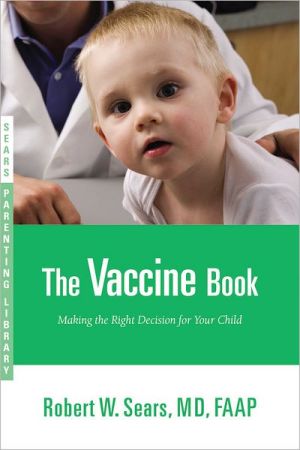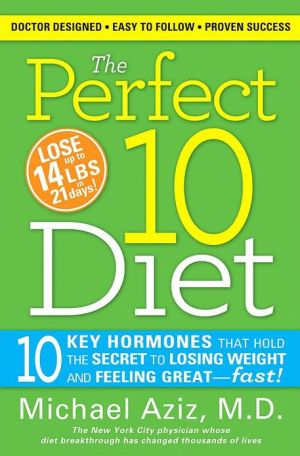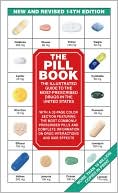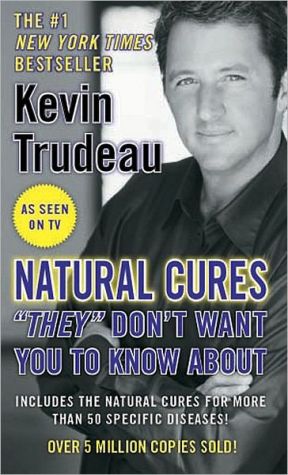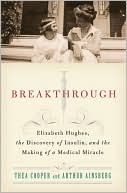Handbook of Nonprescription Drugs
Search in google:
The 14th edition features a new case assessment model for self-treatment and seven new chapters (on multicultural aspects, legal and regulatory issues, prevention of sexually transmitted infections, cough, intestinal gas, meal replacement and performance-enhancing foods, and nonbotanical natural medicines). Pharmacy students and professionals are the audience for the substantial tome, which provides guidelines on how to determine the individual's need, listing possible responses for various scenarios, and describing treatment in a step-by-step format. Tables listing drug-herb and drug-drug interactions are included in most chapters. FDA pregnancy risk categories are described in an appendix. Distributed by McGraw-Hill. Annotation ©2004 Book News, Inc., Portland, OR Doody Review Services Reviewer:Elaine D Mackowiak, BSPharm, MS, PhD, RPh(Temple University School of Pharmacy)Description:This update of the 2006 edition continues its excellent tradition as a thorough and comprehensive handbook on nonprescription products. The algorithms and case studies provide a structured method for students to use in evaluating a patient's self-care problem and recommending an appropriate pharmacological and/or nonpharmacological treatment plan.Purpose:This book introduces students to methods for assessing a patient's health status, determining if self-care is appropriate, and developing an appropriate therapeutic plan for the patient. Audience:Written for pharmacy students, the book is especially helpful in providing information to students who may have limited backgrounds in anatomy, physiology, and pharmacology.Features:The book discusses the role of nonprescription drugs and products in the self-care of illnesses. It discusses the differences among OTC drugs, dietary supplements, CAM therapies, and the regulatory control of these products. The chapters on CAM therapy are the biggest improvement in this edition. They provide a consistent format for discussion of the products' uses, safety, and efficacy, allowing for easy comparison of products and retrieval of information. The numerous tables, illustrations, and color plates enhance understanding. Advanced students and practicing pharmacists may find some of the general information about the medical conditions too repetitive.Assessment:The consistent updating of the book is one of its strengths. It remains the most comprehensive publication, but also the most expensive. The publisher has just released a less expensive practitioner's version, Dlugosz's The Practitioner's Quick Reference to Nonprescription Drugs, that covers 25 common medical conditions. Nonprescription Product Therapeutics, 2nd edition, by Pray (Lippincott Williams & Wilkins, 2006), is a similar book, but it is now three years old. The Pocket Guide for Nonprescription Product Therapeutics, Finkel and Pray (Lippincott Williams & Wilkins, 2005) is now four years old and out of print.
ForewordPrefaceContributorsHow to use the new case problem-solving modelSect. IThe pharmacist's role in self-care1Self-care and nonprescription pharmacotherapy32Patient assessment and consultation173Multicultural aspects of self-care374Legal and regulatory issues in self-care pharmacy practice57Sect. IIPain and fever disorders5Headache and muscle and joint pain736Fever1117Musculoskeletal injuries and disorders131Sect. IIIReproductive and genital disorders8Vaginal and vulvovaginal disorders1599Disorders related to menstruation18110Prevention of unintended pregnancy20511Prevention of sexually transmitted infections225Sect. IVRespiratory disorders12Disorders related to cold and allergy23913Cough27114Asthma287Sect. VGastrointestinal disorders15Heartburn and dyspepsia31716Intestinal gas34917Constipation36718Diarrhea40519Anorectal disorders43320Pinworm infection45721Nausea and vomiting46922Poisoning49323Ostomy care and supplies509Sect. VINutrition and nutritional supplementation24Essential and conditionally essential nutrients53925Meal replacement and performance-enhancing foods57726Infant nutrition and special nutritional needs59727Overweight and obesity631Sect. VIIOphthalmic, otic, and oral disorders28Ophthalmic disorders65929Prevention of contact lens-related disorders69130Otic disorders72331Prevention of hygiene-related oral disorders73932Oral pain and discomfort769Sect. VIIIDermatologic disorders33Atopic dermatitis and dry skin81134Scaly dermatoses83135Contact dermatitis84936Diaper dermatitis and prickly heat87337Insect bites and stings and pediculosis88938Acne91339Prevention of sun-induced skin disorders92940Skin hyperpigmentation and photoaging95541Minor burns and sunburn96942Minor wounds and secondary bacterial skin infections98743Fungal skin infections100944Warts102745Minor foot disorders103746Hair loss1061Sect. IXOther medical disorders47Diabetes mellitus107548Insomnia111749Drowsiness and fatigue113350Tobacco use and dependence1149Sect. XHome medical equipment51Home testing and monitoring devices117952Adult urinary incontinence supplies1213Sect. XIComplementary and alternative medicine53Botanical medicines123154Nonbotanical natural medicines127555Homeopathic medicines1305App. IPregnancy and lactation risk categories for selected nonprescription medications and nutritional supplements1337App. IIBotanical medicines to avoid in pregnancy and lactation1343Index1347
